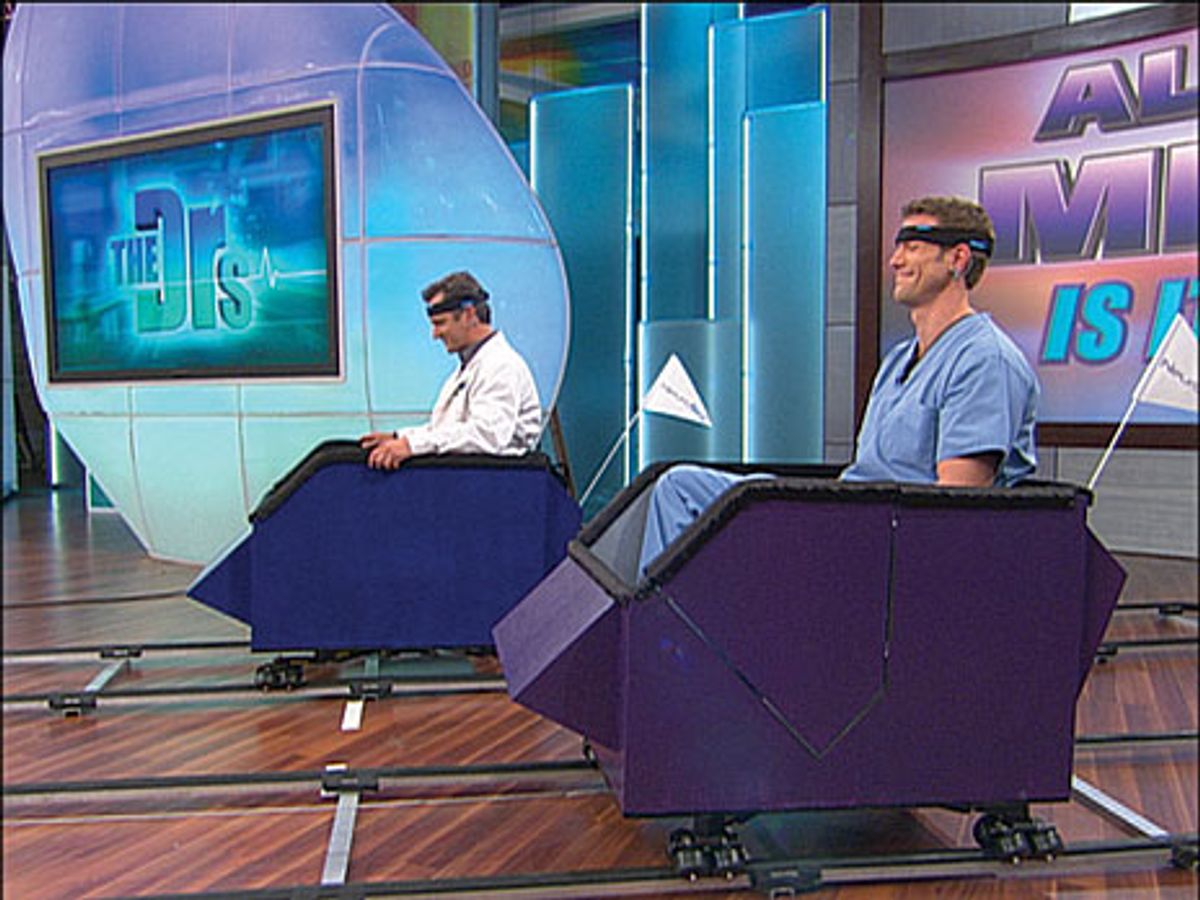It was a typical technology product party—a swank Beverly Hills hotel, loud music, and tiny sausages on sticks. Then partygoers started zooming around in mind-controlled electric carts.
Yes. Mind-controlled electric carts.
The drivers were wearing NeuroSky MindSet headsets. The devices were launched last July, but they were being introduced at this October party as a prelude to a possible TV game show where contestants might use their minds to ignite or levitate various objects. A show hasn’t materialized yet, but since the beginning of this year, NeuroSky’s technology has been used in toys from Mattel, Roll 7, and Square Enix. Players use the power of their minds to float an actual ball through perilous mazes, explode on-screen objects, or reveal hidden avatars.
It’s not all fun and games, though. Initially marketed as both a game and a meditation tool, the MindSet is being deployed in studies that attempt to improve the focus of children with attention-deficit, sleep, and post-traumatic stress disorders, as well as the memories of patients with Alzheimer’s disease. It may soon be used in the automotive and medical industries.
The US $199 headset is a simplified version of an electroencephalograph. Scientists have long understood that different EEG waves are linked with different mental states: Alpha waves, at 8 to 12 cycles per second, are associated with a restful, meditative mind, and beta waves, at 13 to 30 cycles per second, with an alert, engaged mind. Primitive biofeedback machines that emit different sounds for each wave have been used since the 1970s to help meditators increase their alpha wave activity.
The MindSet detects changes in brain-wave patterns via metal sensors at the front and back of the head and at the earlobes. A chip digitizes and transmits that information wirelessly via Bluetooth or RFID to a computer or PDA, which in turn translates it into commands that go back to the device.
Concentrating on an object or thought produces different patterns of brain waves; after the headset calibrates itself to the individual, its algorithms detect those characteristic patterns. As the electric cart drivers, for example, increased their focus on a point ahead or thought of moving forward, the carts moved faster in a straight line. The first person to reach the finish line won.
Cart racing is just a start. NeuroSky’s sexiest future app is an actual thought-controlled ”smart” car. This is no pipe dream, says the company; it’s working with unnamed automakers, although not for any mission-critical tasks like steering. Potential applications include mental control of the car’s temperature and song selection.
EEGs are normally taken in quiet, low-lit labs with minimal electromagnetic noise that can interfere with getting a clear signal. NeuroSky has already developed electronic filters that cancel out electronic signals from light, muscle movement, and the surrounding environment. The San Jose, Calif.–based company now must adapt those filters to cars so they pass safety certifications.
”We’ve also had inquires from cellphone companies,” says CEO Stanley Yang, who was born in Taiwan and earned an EE degree from the University of California, Berkeley, in 1986. ”They are interested in the levels of distraction caused by using a cellphone while driving.”
The big bucks may lie in the video-game industry, though probably not right away. Last year a San Francisco company, Emotiv Systems, launched a $300 headset for computer-based games; its 14 saline sensors also read brain waves that correlate to your facial expressions. IEEE Spectrum reviewed the device in January 2009 and found it wanting.
For its part, NeuroSky is working with several game platforms on a suite of mind-controlled console games. The company also anticipates that developers will release mind-game iPhone apps by August.
”We’re expecting this approach to be a game changer—no pun intended—by taking interactivity to a new level in that industry,” says NeuroSky marketing director Tansy Brook. ”Imagine actually being able to cast a spell or kill a monster using just your thoughts. Harry Potter would be proud.”
About the Author
SUSAN KARLIN writes frequently about the intersection of entertainment and technology for IEEE Spectrum. Based in Los Angeles, she also contributes to The New York Times, Forbes, and Discover.




